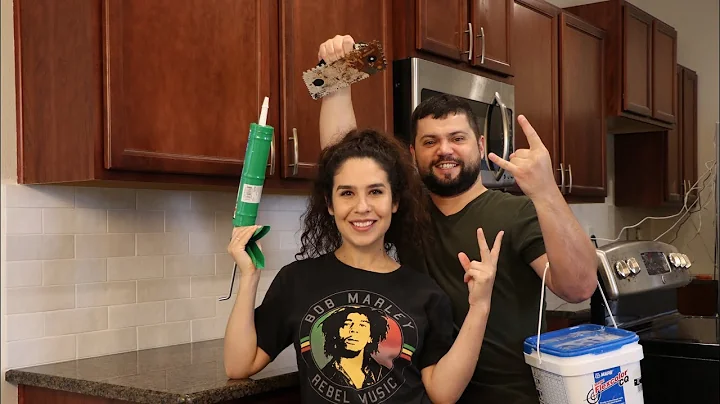Demystifying Oil Pressure in Vehicle Engines
Table of Contents:
- Introduction
- Understanding Oil Pressure
- Components of an Oil Pump
- How Oil Pressure is Created
- The Role of Clearance in Oil Pressure
- Effects of Worn-out Engine on Oil Pressure
- Signs of Low Oil Pressure
- Testing Oil Pressure
- Dealing with Low Oil Pressure
- Conclusion
Article:
Understanding Oil Pressure and its Importance in Vehicle Engines
In any vehicle engine, oil pressure plays a crucial role in ensuring optimal performance and preventing damage to critical components. Many car owners may have experienced issues with oil pressure, even after replacing parts like the oil pump. In this article, we will delve into the workings of oil pressure and how it is created, to provide a better understanding of this essential aspect of engine function.
Components of an Oil Pump
Before we dive into oil pressure, let's take a closer look at the components of an oil pump. Oil pumps mainly consist of a housing, gears or rotors, a pickup tube, and an outlet. The pump is driven by the engine's crankshaft, allowing it to draw in oil from the oil pan through the pickup tube and deliver it to various engine parts.
How Oil Pressure is Created
Contrary to popular belief, oil pumps themselves do not create pressure. Instead, pressure is generated as a result of the resistance to oil flow on the outlet side of the pump. The clearances between different metal parts, such as bearings in the engine, play a vital role in creating this resistance. These clearances, especially those in the main bearings and connecting rod bearings, are responsible for regulating the oil pressure within the engine.
The Role of Clearance in Oil Pressure
When an engine is in good condition, with properly sized clearances, oil flows through the narrow spaces between the metal parts. This restricted flow leads to an increase in pressure as the oil tries to pass through the narrow gaps. Think of it as placing your thumb over a garden hose to increase the water pressure. Similarly, the clearances in the engine create a restricted flow that results in oil pressure.
Effects of Worn-out Engine on Oil Pressure
However, over time, as an engine experiences wear and tear, these clearances can exceed their tolerances and become too large. When this occurs, the flow of oil between the metal parts is no longer restricted, causing a drop in oil pressure. Worn-out bearings and other components can contribute to this problem, as they fail to maintain the necessary clearances for proper oil pressure.
It is essential to note that simply replacing the oil pump or other individual components will not solve the issue if the engine is worn out. The excessive clearances within the engine cannot be addressed solely by replacing parts, as the overall condition of the engine is the underlying cause. Therefore, it is crucial to diagnose the actual root cause of low oil pressure before resorting to part replacements.
Signs of Low Oil Pressure
Identifying low oil pressure in your vehicle is essential to prevent severe engine damage. Warning signs of low oil pressure include the illumination of the oil pressure light on the dashboard, a persistent knocking noise from the engine, and fluctuating oil pressure gauge readings. If you notice any of these signs, it is crucial to address the issue promptly to avoid further engine damage.
Testing Oil Pressure
To accurately determine the oil pressure in your engine, it is advisable to use an oil pressure gauge. These gauges can be connected to the engine in place of the oil pressure sending unit. By observing the oil pressure readings on the gauge, you can gain insights into the actual oil pressure within the engine. It is important to follow the manufacturer's specifications for oil pressure values, as these can vary for different engine models.
Dealing with Low Oil Pressure
If you have confirmed that your engine is experiencing low oil pressure, it is essential to take immediate action. Start by checking the oil level to ensure it is not too low. If the oil level is adequate, consult a qualified mechanic to diagnose the root cause of the low oil pressure. In many cases, it may be necessary to rebuild or replace the engine to restore optimal oil pressure and overall engine performance.
Conclusion
Understanding oil pressure and its role in engine function is crucial for vehicle owners and enthusiasts. By grasping the concept that oil pumps do not create pressure, but rather the resistance to oil flow does, one can appreciate the importance of maintaining proper clearances within the engine. If you notice any signs of low oil pressure, it is vital to address the issue promptly to prevent potentially costly engine damage. Regular maintenance and timely inspections can help ensure optimal oil pressure and extend the lifespan of your vehicle's engine.
Highlights:
- Oil pumps do not create pressure; pressure is a result of resistance to oil flow.
- Worn-out engines can have excessive clearances, leading to low oil pressure.
- Signs of low oil pressure include illuminated oil pressure light and engine knocking noises.
- Testing oil pressure using a gauge helps accurately diagnose the issue.
- Prompt action is necessary to prevent further engine damage when experiencing low oil pressure.
FAQ:
Q: Can a worn-out engine cause low oil pressure?
A: Yes, worn-out engines with excessive clearances can result in low oil pressure as the oil flow is no longer restricted.
Q: What are the signs of low oil pressure?
A: Signs of low oil pressure include an illuminated oil pressure light on the dashboard, persistent engine knocking noises, and fluctuating oil pressure gauge readings.
Q: How can I test the oil pressure in my engine?
A: Using an oil pressure gauge, you can connect it to the engine in place of the oil pressure sending unit to get accurate oil pressure readings.
Q: What should I do if my engine has low oil pressure?
A: If your engine has low oil pressure, first check the oil level. If it's adequate, consult a qualified mechanic to diagnose the root cause and determine the necessary course of action.
Q: Can replacing the oil pump solve low oil pressure issues?
A: If the engine is worn out, simply replacing the oil pump will not solve the low oil pressure problem. The overall condition of the engine needs to be addressed. Proper diagnosis is crucial.







